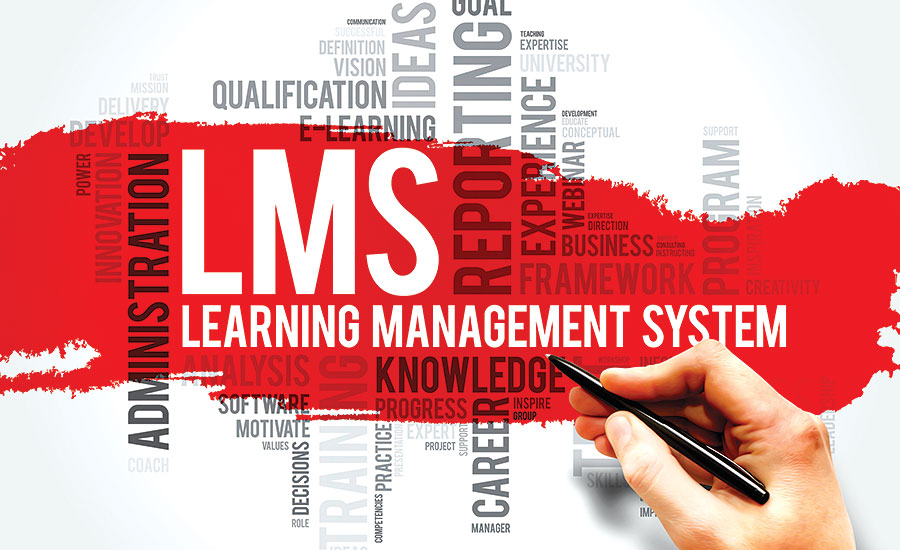Search around and you’ll quickly notice that a “learning management system” is narrowly defined as “software” for the administration of workforce training and delivery of content. Yet what most organizations are really looking for when considering an “LMS” is an accountability tool, something that will help them get a handle on training programs, and greatly simplify all training-related tasks, from scheduling and tracking to identifying lapses in compliance.
And since there are well over 20 proprietary learning management systems out there, with most sold alongside of companion training content, let’s take a look at some of the unanticipated concerns around making the purchase.
How long does it take to implement?
If you’re actively evaluating LMS options, make sure to ask about implementation time. The last thing any organization needs is an expensive headache associated with software, or a dreaded “change management” project. And if you’re pitching a move to online training internally, smart executives will be all over those concerns.
There are a couple of factors that can complicate implementation, yet if you’re working with a vendor whose given timeline is several months to get you up and running, that should raise a big red flag because it signals the quality of service you’re likely to experience for the life of your contract, and the complexity of the system you’re looking to purchase. For any prospective vendor, the urgency to set you up for success after the sale should be at least as great as the urgency to get your contract signed, if not greater. Software is supposed to make things easier, saving time and money—don’t let go of those objectives.
Is there a cost associated with implementation?
Typical pricing for LMS providers involves an annual fee and an implementation fee that may be contingent on several factors, such as the size of the user base (the workforce you intend to train), integration with pre-existing software, etc. With that structure, you pay once for the initial setup and then have an ongoing fixed cost to consider. Know that there are free LMS options out there and that some providers charge nothing for implementation.
Will it support our entire training program?
Many OSHA standards require both knowledge and practical assessment for worker training, meaning that for certain courses both simple testing and demonstrated proficiency—that’s hands on, live training—are required. Forklift training is one example. For those training topics, online training is only half of the compliance equation. That’s why you want to find an LMS that can support all of your offline, live training activities, with complete tracking and the capability to upload existing training assets, like important written safety policies, for example.
Will it play well with other systems?
For larger organizations where training is closely integrated with HR departments, an LMS may be required to integrate with Human Resources Management Systems (HRMS) or Human Resources Information Systems (HRIS). And if that’s the case, you’re likely looking at additional cost and time on the implementation side. For some LMS options, integration isn’t even possible with other systems. Be sure to ask providers about these situations if applicable, and to inquire about additional time and expense.
Is it easy to use?
If the learning management system you’re evaluating requires a lot of training on the front end, that’s a sign of complexity. Some LMS options have a lot features, and claim to do everything that an organization could possibly need from an LMS, and in some cases that might even be true. The problem with that is new software takes a little getting used to anyway, and so additional ‘bells & whistles’ won’t really help you get started and may never actually prove useful. In reality, what those upsells do is help justify added expense charged by the provider; don’t be blinded by features and benefits.
There are only a few things common to all LMS options that really matter—tracking (training data), reporting (of training data), and automation (email notifications, course completion notes, etc.) You want to find an LMS that works for you, not something you have to work hard at understanding. Look for a clean, minimal interface. If an LMS looks harder to use than Microsoft Office, it might not be the right fit for you.
Is the course content strong enough to justify paying for the LMS?
With few exceptions, an LMS is a secondary purchase because it is a content delivery system. For most providers, training content is the primary product for sale, and the associated LMS is only what is necessary to facilitate course deployment and use. So a move to online training is usually a package deal. Yet there are plenty of situations where training content from one provider is deployed on an LMS from a different provider, and vice versa. That’s why it is important that an LMS be capable of running different content from multiple providers.
Will it make my professional life easier?
If the answer to that question is no…then you need to continue your search. Because the LMS you ultimately select must also be easy to work with or else you’ll avoid using it. It should make the administration of online training simple, returning time to what was once, for many, an arduous, labor intensive process involving multiple spreadsheets and endless rounds of data entry. Above all, an LMS should deliver efficiency enough to justify the expense of the purchase, a return on your investment.
Before you commit to an LMS, think about these three things: efficiency, accountability, and simplicity. In fact, let that be your mantra.





